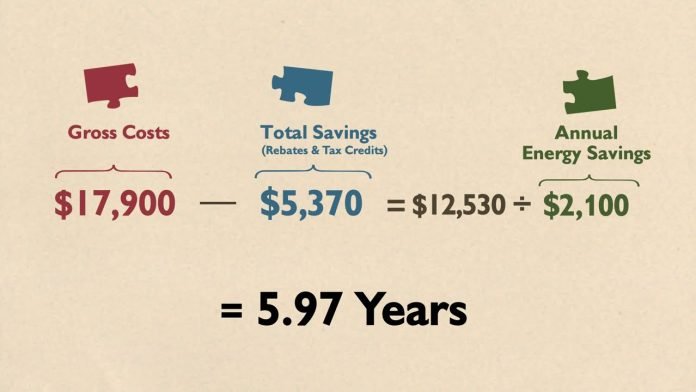Last Updated on May 16, 2025 by Rida Gul
If you’re confused about how to take advantage of the solar tax credit, check out this article to learn more. Not only will it explain what exactly the solar tax credit is, but it will also break down everything that makes it special and why you should be using it right now to make your home energy-efficient.
Table of Contents
Solar Tax Credit
If you’re a homeowner who uses solar energy to power your home, you may be eligible for a tax credit. The solar tax credit is available through the IRS and it can reduce your tax liability by up to $2,500 per year. Here’s how the credit works:
The credit is based on your electric bill for the previous year. You can use the solar tax credit to reduce your federal income taxes by up to 30% of the cost of your solar system. This means that if you installed a $20,000 solar system, you could reduce your taxes by $6000.
To qualify for the solar tax credit, you must have purchased or leased your home before December 31st of the year in which you install your solar system. You must also have installed a qualified solar system that meets all of the following requirements:
-Your solar system must be placed on property that you own or lease.
-Your solar system must generate electricity for use at your residence.
-Your solar system must be purchased or leased after January 1, 2006.
-Your installed capacity must be at least 750 watts and your roof area must be at least
What is the solar tax credit?
The solar tax credit is a federal tax credit available to individuals, businesses, and non-profit organizations that install solar panels. The credit amounts to 30 percent of the cost of a solar system, with a maximum credit of $2,500 per installation. americantaxservice.org
The solar tax credit has been around for several years, and was most recently amended in 2015. It’s important to note that the solar tax credit is not available to homeowners who install their own solar panels; it’s only available to businesses or organizations who contract with a solar installer.
If you’re interested in installing solar panels, be sure to check out your local government’s website or the Solar Energy Industries Association (SEIA) website for more information on the solar tax credit.
Solar Tax Credit Benefits
If you’re looking to invest in solar power, chances are you’ve heard of the Solar Tax Credit. But did you know that the credit is actually available on a state-by-state basis? In this blog post, we’ll outline the benefits of the Solar Tax Credit in each of the 50 US states, and explain how to take advantage of it.
The Solar Tax Credit is an investment incentive offered by the federal government and available on a state-by-state basis. Each state offers a different credit amount and deadline, so it’s important to check with your tax advisor to see if the Solar Tax Credit is right for your project.
Here are some of the main benefits of taking advantage of the Solar Tax Credit:
1. The credit can be used to offset your income taxes, which means that it’s a great way to save money on your taxes. This is especially important if you’re eligible for a lower tax bracket than you would have otherwise.
2. The credit can also reduce your overall cost of solar power installation by making it more affordable for you. This is because the credit applies to a percentage of your total cost, rather than just the
How to be Eligible for the Solar Tax Credit
If you own or lease a home solar system and use it to generate energy, you may be eligible for the Solar Tax Credit. The credit is available to individuals and businesses that install or upgrade solar systems in their homes or businesses and use the energy they generate to reduce their energy bills. If you are eligible for the credit, you may be able to deduct up to $2,500 of your solar system installation costs from your income taxes.
To be eligible for the Solar Tax Credit, your solar system must meet certain eligibility requirements. Your solar system must be installed in your primary residence or business property, and it must be used to produce energy. You can use the energy generated by your solar system to power lights, appliances, and other devices in your home or business.
If you are eligible for the Solar Tax Credit, you should file Form 8886 with your income tax returns. You can find more information about the Solar Tax Credit on IRS.gov.
Read More: The Benefits and Functions of Road Graders.



























